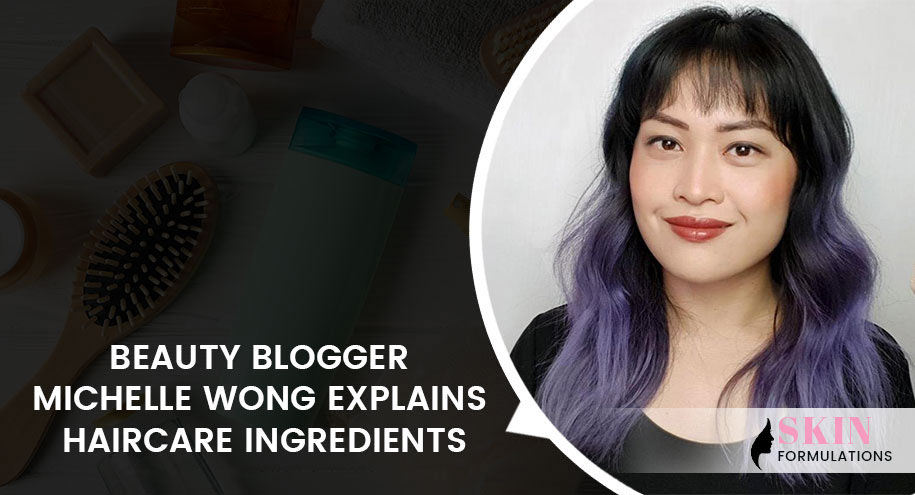Beauty Blogger Michelle Wong Explains Haircare Ingredients

Do you read the label of your haircare products? Ever wondered what the different ingredients mean, and which ones are good for your hair? Beauty blogger of the week Michelle Wong is here to explain the science behind shampoos and conditioners to resolve all your doubts!
Michelle holds a Ph.D. in chemistry and is a cosmetic chemist. With her scientific background, she uses her blog, Lab muffin, to educate people regarding skincare and haircare. On her blog, Michelle deep dives into the composition of different products and debunks myths about popular ingredients. In her recent blog post, Michelle talks in depth about shampoos and conditioners, sharing her thoughts on the ingredients that go into these products.
Michelle Explains the Science of Haircare Products
- What Do Shampoos Do – Michelle explains that the primary role of shampoo is to clean the scalp. Just like the skin on our face, our scalp produces natural oil or sebum. This oil can also attract dirt, dead skin, and other impurities that can make the scalp itchy and greasy. The shampoo helps to remove this dirt and grime from the scalp. Therefore, the primary ingredient of shampoo is a surfactant, which attracts oil and dirt from the scalp and removes it when washed off with water.
- Popular Shampoo Surfactants – Michelle says that anionic or negatively charged surfactants are the most popular choice for shampoos. Examples of these surfactants include sulfates and sarcosinates, which you may spot on the ingredient list of most shampoos. Sodium lauryl sulfate or SLS is a commonly used surfactant, infamous for causing skin irritation. The reason is that the SLS molecule is small and can penetrate the skin to potentially irritate it when used as a standalone surfactant.
Sodium Laureth Sulfate or SLES is a popular alternative, with a larger molecule. It has a lower probability of penetrating and irritating the skin. While some people prefer SLS-free shampoos, SLS is not necessarily irritating and may work well at deep cleaning the scalp given the right formulation. Therefore, you can continue to use an SLS-based shampoo if it works for you despite the concerns about the ingredient.
- What Does a Conditioner Do – Michelle states that the primary functions of a conditioner may include adding shine, detangling the hair, and smoothing over any damage. For this, a conditioner forms a thin film over each hair strand. Therefore, conditioners contain cationic or positively charged surfactants that coat the negatively charged wet hair strands.
- Other Ingredients in A Conditioner – Michelle mentions that in addition to cationic surfactants, conditioners may also contain fatty alcohols to give a thick and smooth texture to the product. These fatty alcohols can clog the skin on your back when you wash off the conditioner. So, make sure to scrub your back afterward!
The next time you read the label of your haircare products, make sure to look out for these ingredients! For more information on the science behind shampoos and conditioners, check out Michelle’s full blog post on labmuffin.com.
Deprecated: Function WP_Query was called with an argument that is deprecated since version 3.1.0!
caller_get_posts is deprecated. Use ignore_sticky_posts instead. in /home/healthwebmagazin/skinformulations.com/wp-includes/functions.php on line 5737





